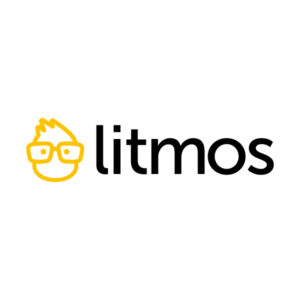How To Drive Greater Employee Engagement In Training
If your organization is like most companies, you’re heavily invested in training. However, are your employee training methods able to bring the results you need? Are your courses engaging?
According to Training Magazine’s latest Training Industry Report [1], U.S. businesses spend an average of $1,286 to train each of their workers. Unfortunately, all those training dollars will go to waste if your learners aren’t finishing your courses. How do you make sure your learners are engaging with your course content? According to Gallup’s most recent data [2], workplaces that create “high-development cultures”—those that offer employees the opportunity “to develop their strengths and purpose into a career”—were likely to see much more engaged workers.

But “high development” means more than putting some courses together and expecting your workers to complete them. Instead, it’s about developing a strategy that incorporates learning into your organization and creates engaging learning your employees want to take and complete.
Fortunately, there are several ways to create an engaging culture of Learning and Development in your organization.
1. Communicate With Your Learners About Your Current Employee Training
When all your employees work in one place, it’s easy to remind them about your L&D program. Due to current events, however, your employees may have been working from home for several months this year. At home, they may have been distracted by the pressures of quarantine: family members, their living situations, and the news. They may need a gentle nudge to remember your employee training program and development opportunities.
In sending these reminders, it may help for L&D professionals to enlist the help of the marketing department, or at least to think like marketers conducting an internal campaign. In 2019, LinkedIn found that while more than half of L&D teams listed increasing employee engagement as their top challenge in 2019 [3], talent developers only spent 15% of their time marketing their courses to learners.
But that should change. To improve employee engagement numbers, your L&D developers are going to have to communicate with learners more, sending out email blasts and using the company Slack and intranet to remind learners about their courses.
Communication really works; 61% of learners find out about employee training through email, according to LinkedIn. But the most effective messages about employee training often come from one specific source: a learner’s boss.
2. Embrace A Coaching Model To Increase Employee Engagement
Yes, everyone likes to complain about their boss, but they also crave their boss’s praise.
Three-quarters of employees say they’d take a course if it were assigned by their manager [3]. That’s further proof of a fact L&D experts have long known to be true; when it comes to workplace learning, a coaching model works. LinkedIn’s latest Learning in the Workplace report [4], finds that most employees—especially the youngest ones—would spend more time on learning if their direct supervisor suggested they do so; 44% of Generation Zers would be more receptive to courses, followed by 36% of millennials, 28% of Gen-Xers, and 21% of boomers.
That’s probably why Gallup finds that organizations with high-development workplace cultures encourage managers to act less like a boss and more like a coach; it’s the manager’s job to discover the team’s strengths and weaknesses, to encourage teams to solve problems, and to choose employee training and development specifically for their employees.
These organizations do more than expecting managers to act as coaches, however. They also train leadership in their existing managers and tailor that employee training to the managers and their teams.
What better way to do this than recommending interesting courses? For the best results, you need to measure employee engagement and find smart ways to boost course completion.
3. Get Your Executives To Champion Learning
While 83% of L&D professionals say their executives support Learning and Development, says LinkedIn’s research, not as many are active champions of learning. And to build a culture of learning in the workforce, company leaders must be actively pushing for Learning and Development.
The best way to do this is to get organization leaders involved in learning. Gallup found that high performing organizations weren’t simply expecting managers to be coaches. They were expected to be employee training managers in coaching behaviors, like learning how to identify the strengths of team members and how to help build those strengths.
Executives should also be teaching their own courses. A CEO might teach a course on leadership, which is extremely likely to drive employee engagement because plenty of employees will want to take that course. They all know who the CEO is, and they’ll be interested to learn more about leadership from their own leader.
Creating that course content is likely to inspire excitement from both learners and the leader, who will get to see how learning content is developed and how the employee training budget is being used.
4. Find An Effective Way To Measure Employee Engagement
You can’t manage what you don’t measure, and according to LinkedIn’s 2020 Learning in the Workplace report [4], a quarter of L&D professionals isn't measuring employee engagement at all.
Those who do measure employee engagement use course completion, learner satisfaction surveys, minutes of learning per month, and repeat visits to learning content as yardsticks. The problem is, standards for measuring learner engagement haven’t really been established in the L&D industry.
Why is this an issue? If there’s no industry standard, L&D professionals may struggle to agree on what an engaged learner looks like because different learning objectives may require different metrics.
For example, using “learning minutes per month” as a way to measure employee engagement may work well for an employee who is trying to master a hard skill, like a programming language, but if a learner is simply logging into a course to refresh a skill or take some just-in-time microlearning, tracking minutes per month won’t paint an accurate picture of employee engagement.
The same can also be said of course completion. As learning becomes smaller, it might make sense to measure completion in modules or to measure the completion of videos or other smaller units to understand exactly what learners have and have not completed.
5. Gamify Your Learning
Sometimes the best way to make your learning engaging is simply to make it fun. That’s where gamification comes in.
Gamification is the introduction of game mechanics into non-game situations, like work or training. Although gamification can take several forms, in L&D it’s most often seen as a point system.
Learners take employee training modules, earn points, and are either awarded a badge or appear on a leaderboard that ranks all staff by their training activity. A little competition—either with the team or with oneself—tends to work. By turning learning into a game, it’s easier to motivate learners to complete modules and continue on their learning pathways.
If Staff Is Engaged With Learning, They’re Highly Engaged, Period
Employee engagement in training is good news for your organization in general; if your employees are highly engaged in learning, they’re more likely to engage in other areas of work-life as well.
According to Gallup’s data, employee engagement was at an all-time high in the U.S. in 2019. The reason for that high engagement? Development. Workers like being offered development, especially if it’s in line with their interests and ambitions. Gallup found that workplaces that create a culture of learning and high development were likely to see happier, more engaged workers overall. Dig in the eBook The New Essentials Of Employee Training: Cultivating Engagement And Enjoyment to discover more about what employee training has to offer when implemented correctly, focused on engagement and joy!
References:
[1] 2019 Training Industry Report
[2] 4 Factors Driving Record-High Employee Engagement in U.S.
[3] 2019 Workplace Learning Report
[4] 2020 Workplace Learning Report








